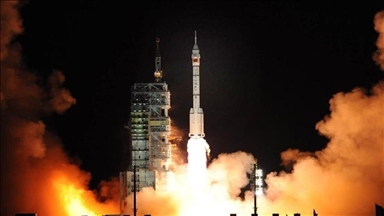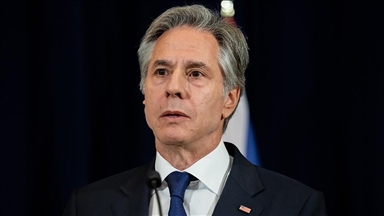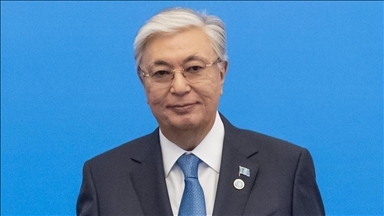
By Benjamin Garvey
HONG KONG
Tens of thousands of protestors returned to Hong Kong's streets late Friday in response to student leaders' calls following the government's decision to postpone talks.
Around 30,000 gathered outside the government's main office in the latest mass call for the former colony's chief executive to be elected free of Beijing's oversight.
Ordinary Hong Kongers listened to speeches and applauded as they sat in orderly rows spread out over a one-kilometer section of Connaught Road. Many had yellow ribbons pinned to their tops and around half wore black - the city's traditional color of protest.
“I came here to support the students,” Keith Ng, a 40-year-old engineer, told the Anadolu Agency as he sat on a concrete divider separating carriageways. “I am afraid the police might do something.”
He added: “Hong Kong still had a lot of freedom after the handover in 1997 but in recent years the Chinese government has got more and more involved in Hong Kong's affairs. Also, there are too many Chinese migrants in Hong Kong now. They are diluting our culture.”
The crowds were the largest since protest leaders agreed to meet with the government to discuss their demands. During the week, only a few hundred protesters - mostly students - stayed around Hong Kong's Admiralty – the main demonstration site - and in Mong Kok district, north of the harbor.
Talks had been due to go ahead Friday but the territory's Chief Secretary Carrie Lam shelved the discussions a day earlier, leading to the student leaders calling for a mass rally Friday evening.
Lam's announcement came hours after lawmakers in support of the protests said they would block the passage of bills if the government did not yield in the talks.
The threat was the first time the complaint of China's meddling in local politics moved from the street and into the legislature.
Piano teacher Kit Lau told the South China Morning Post that she was attending Friday's rally to show her dissatisfaction with Lam's cancellation of the meeting with students.
The 22-year-old said: "Although students said they would step up their actions, nothing has changed much."
Gray Chow, a teacher, told the newspaper the switch from heavy-handed tactics - a reference to the police's use of pepper spray and tear gas early in the protests - to dialogue, to the cancellation of the dialogue, hinted at division within the government.
"The original dialogue at least helped ease tensions slightly, but now the distance between protesters and the government is even further apart," Chow, 30, added. "People are even more disappointed with the government now."
In August, Chinese leaders ruled that while Hong Kongers could choose their next chief executive in the 2017 elections, the candidates would have to be approved by Beijing first.
Hong Kong - an international financial center - was a British colony from 1842 to 1997. The non-violent movement is seen as the biggest challenge to Chinese rule in the territory since Beijing resumed sovereignty.
Some observers are concerned that if the protests persist and Hong Kong police again fail to disperse the demonstrators, the Chinese military, known as the People’s Liberation Army, could intervene.
That scenario has revived memories of the killing of student protesters in Tiananmen Square, in the heart of Beijing, in June 1989.
The 1989 movement, initiated by students to push for a democratic China, ended when the military shot dead hundreds of people, perhaps more than 1,000.
Anadolu Agency website contains only a portion of the news stories offered to subscribers in the AA News Broadcasting System (HAS), and in summarized form. Please contact us for subscription options.








